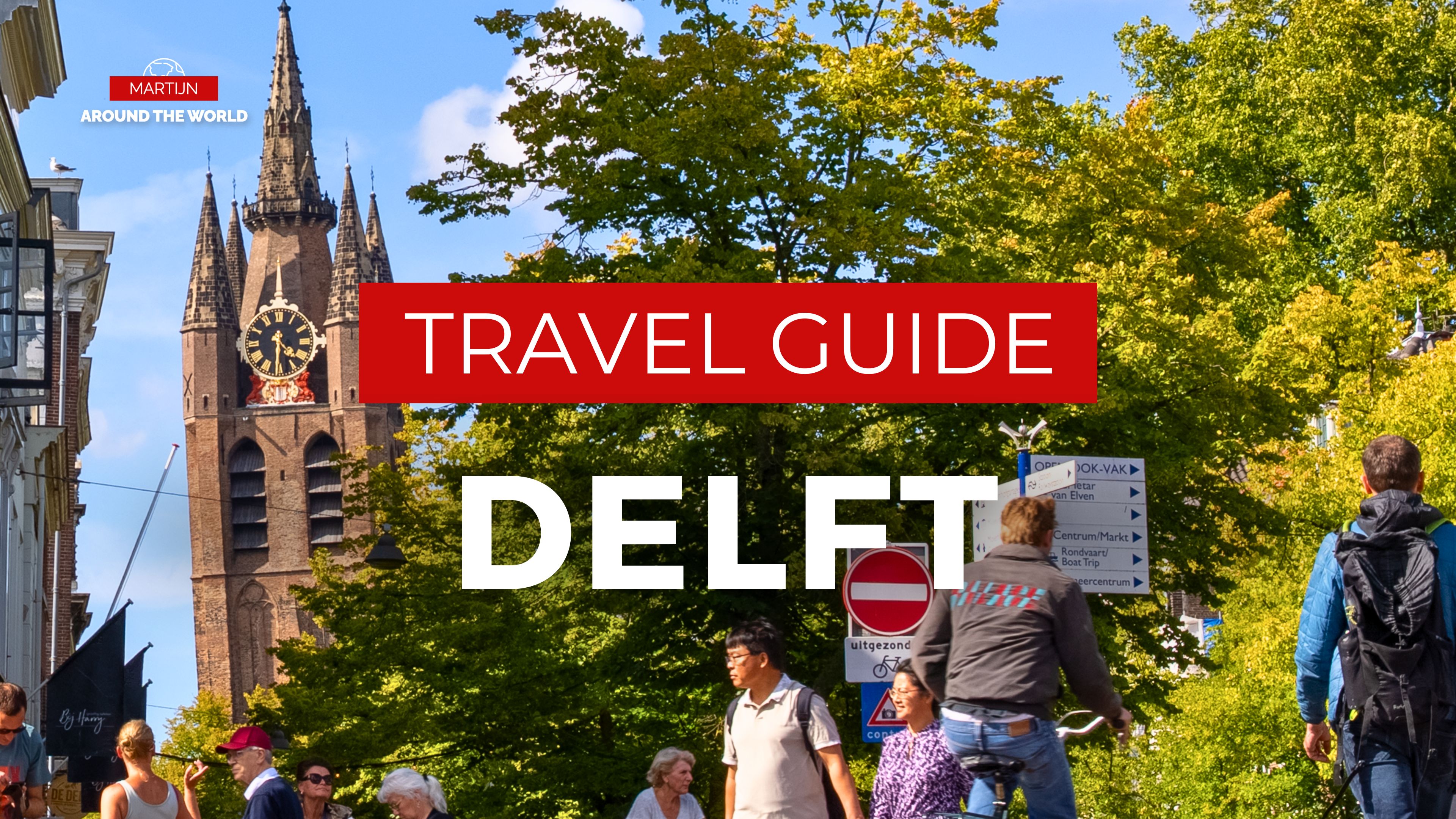Delft may not be the largest city in the Netherlands, but it’s one of the most atmospheric and historically significant. Famous for its canals, its role in Dutch independence, its blue-and-white ceramics, and as the home of Johannes Vermeer, Delft is a city where every street corner has a story. Walking through Delft feels like stepping into a 17th-century painting — yet it’s also a lively university town filled with cafés, markets, and creativity. If you’re planning a visit, here’s your Delft Travel Guide to discovering Delft.
Getting to Delft
Delft is easy to reach thanks to two nearby airports:
Amsterdam Schiphol Airport (AMS)
Schiphol, about 44 km away, offers a much wider selection of international flights. From the airport, there’s a direct train to Delft every 15 minutes, taking about 45 minutes. Tickets cost roughly €13. This makes Delft a very manageable day trip from Amsterdam — but you’ll want to linger longer.
Rotterdam The Hague Airport (RTM)
Just 8 km away, this is the most convenient airport if you’re flying within Europe. A taxi to Delft takes about 20 minutes and costs around €25. Budget travelers can take bus 33 to Rotterdam Central Station (20 minutes) and then continue by direct train to Delft. Trains run every 15 minutes, and the whole journey takes less than 40 minutes.
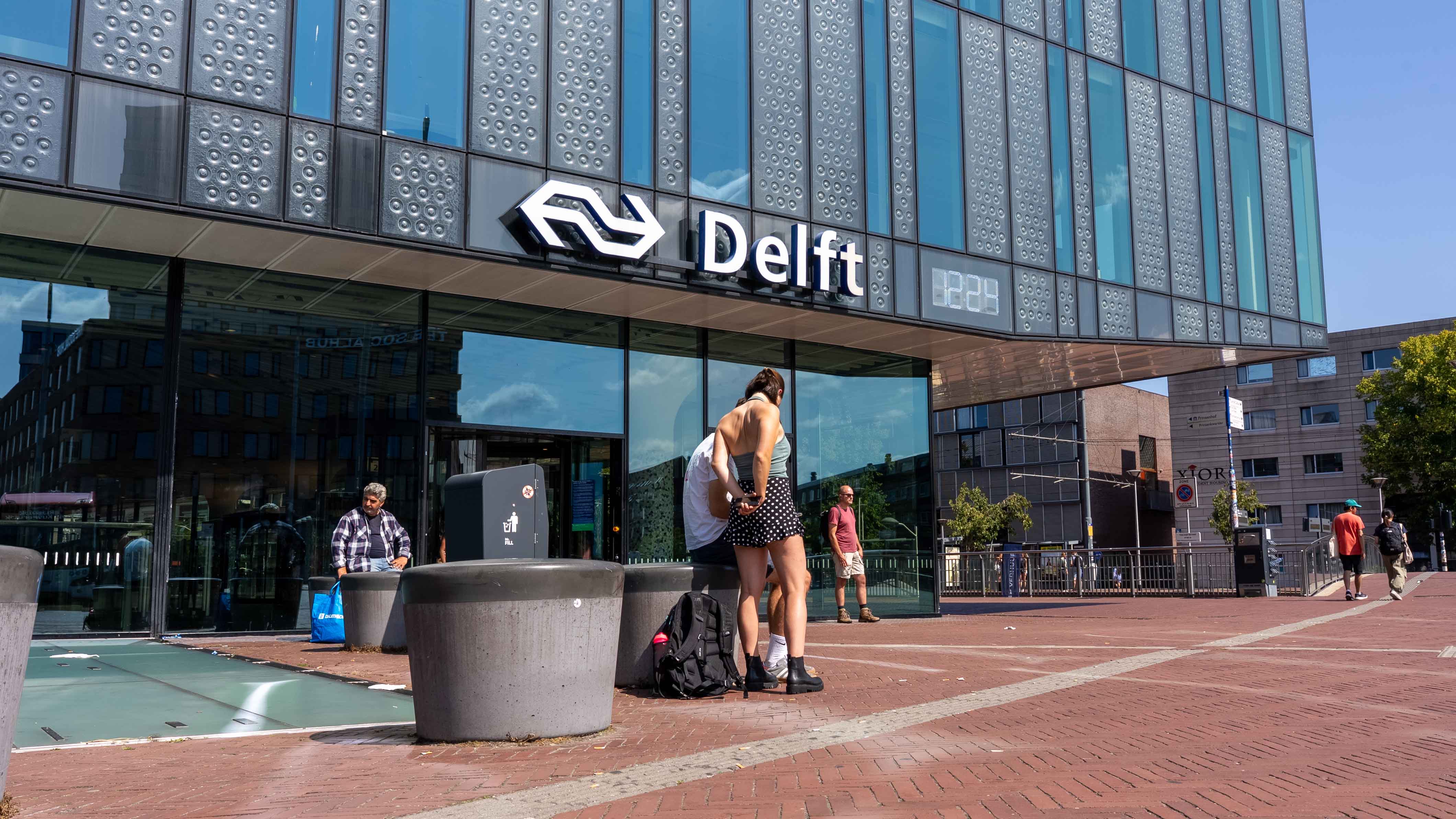
Must-See Highlights in Delft
Nieuwe Kerk (New Church)
Despite the name, the New Church isn’t new at all — construction began in 1396. Its soaring Gothic tower dominates Delft’s skyline, making it impossible to miss.
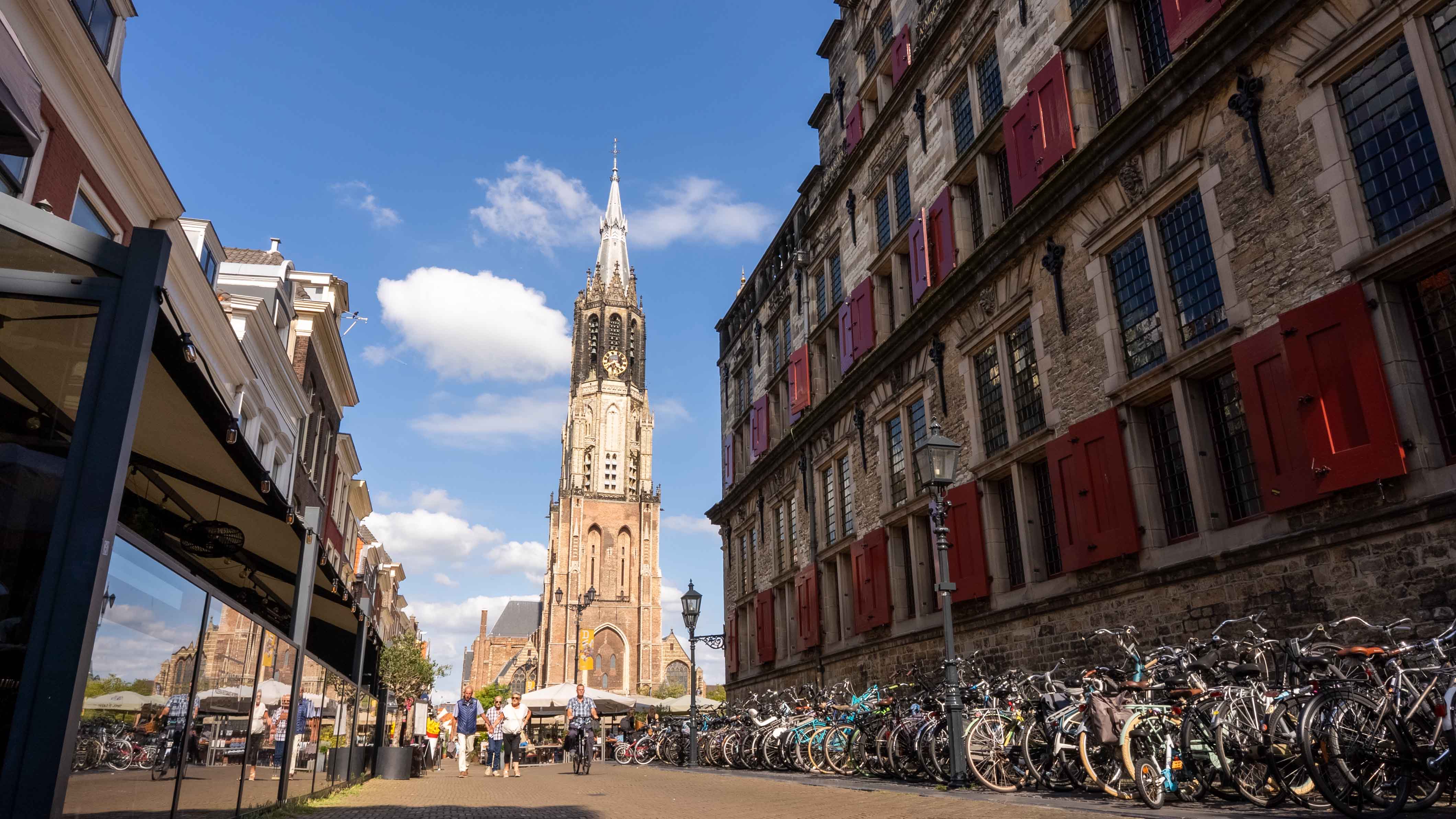
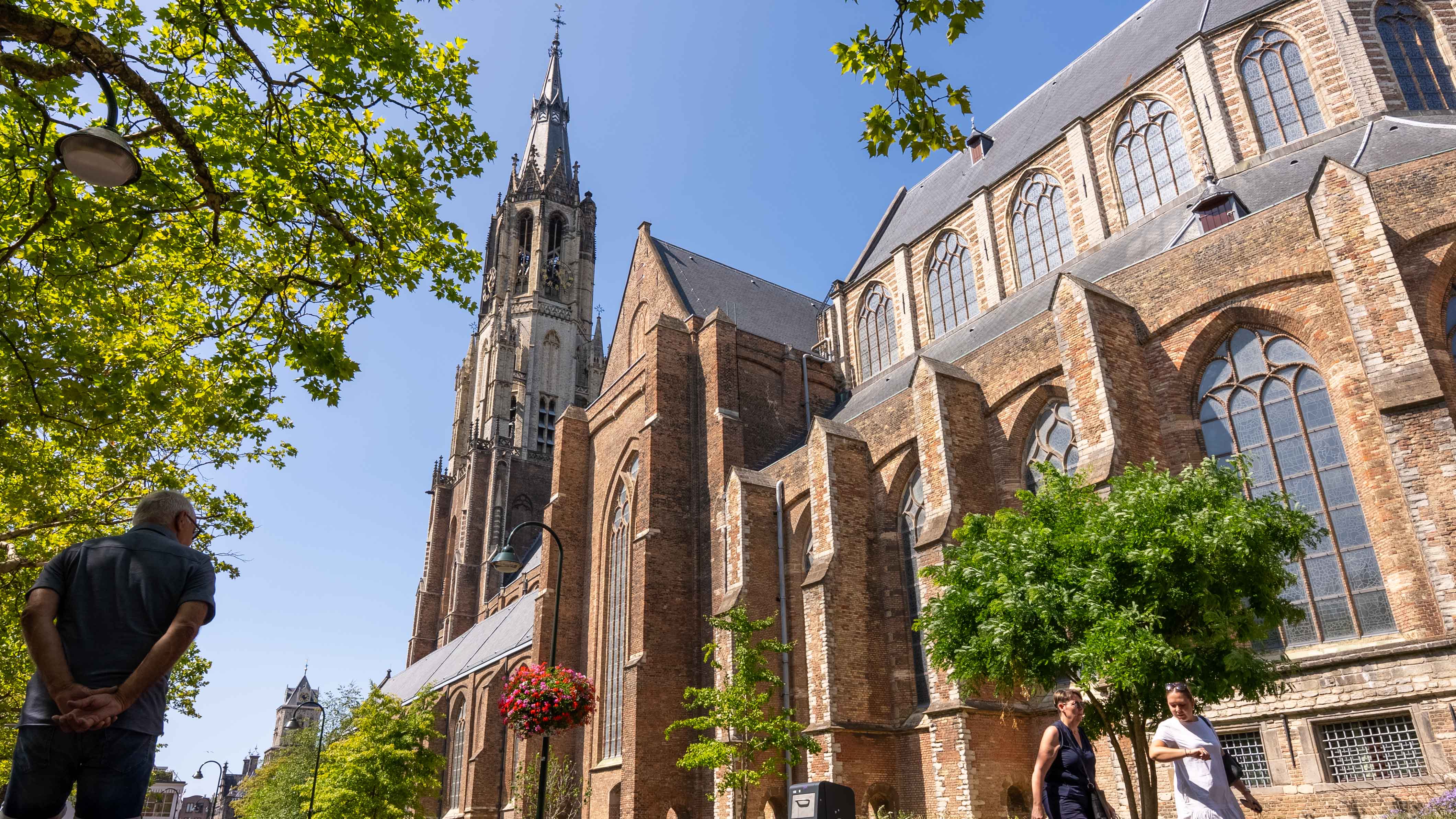
But what makes this church truly significant is what lies beneath it: the tomb of William of Orange, leader of the Dutch revolt against Spanish rule and often called the “Father of the Nation.”

After William’s assassination in Delft in 1584, he was buried here, and the church has since become the royal burial site for the Dutch Royal Family. Inside, you’ll find a blend of history, architecture, and national identity — the intricate stained-glass windows tell stories of Dutch triumphs and struggles, while the sheer scale of the building reminds visitors of Delft’s importance in the country’s past.
The church tower rises 108 meters, the second tallest in the Netherlands. Adventurous visitors can climb 376 steps to the top, where breathtaking views stretch as far as Rotterdam, The Hague, and even the North Sea on clear days.
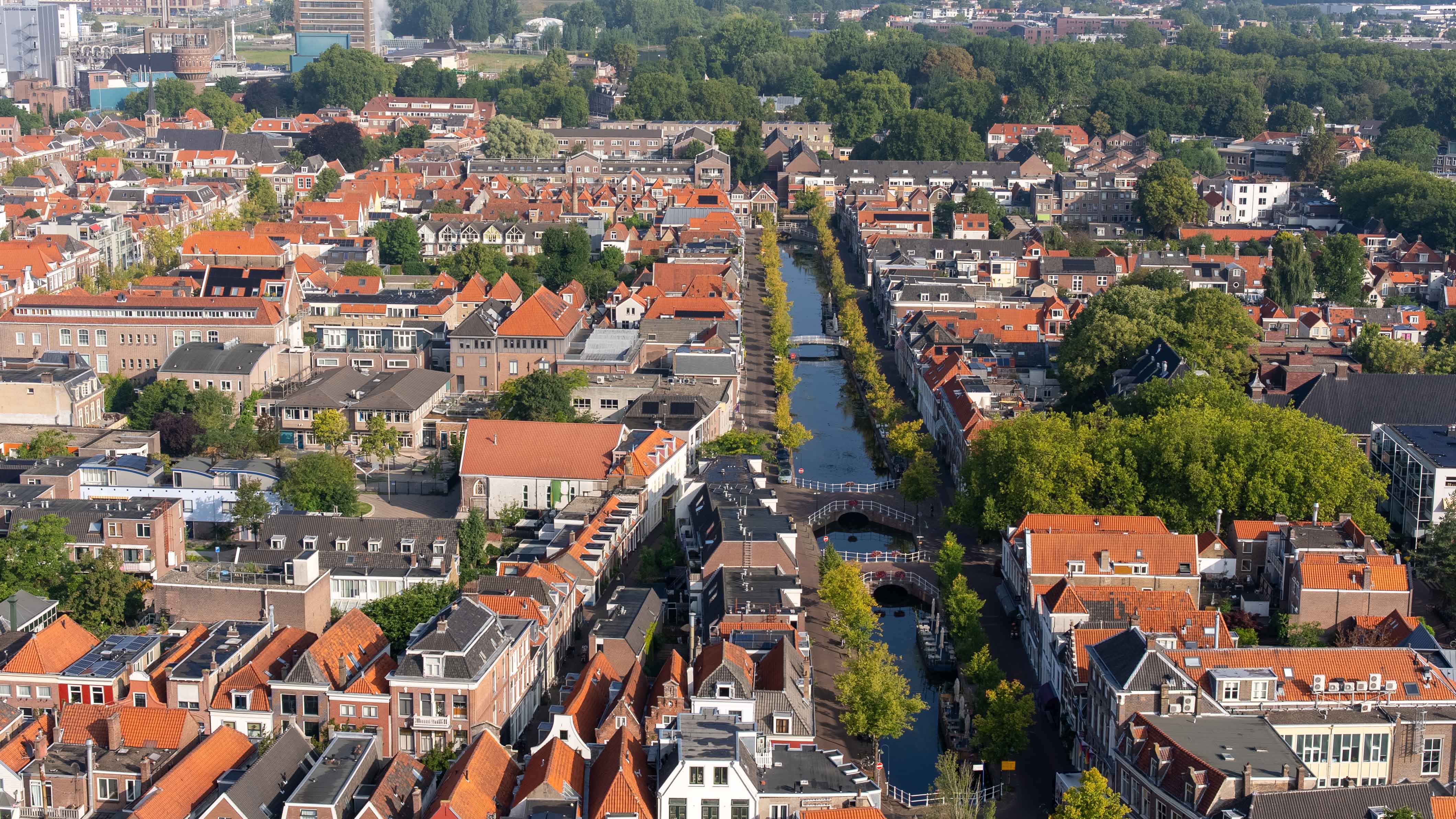
💡 Good to know: Tickets are sold as a combined pass for both the New and Old Church. This makes for a perfect historical duo, offering two different perspectives on Delft’s heritage.
Marktplein & City Hall
At the center of Delft lies the Market Square (Marktplein) — a wide, open square lined with cafés, shops, and history at every turn. On one side, the New Church towers above everything, while on the opposite side sits the City Hall, a Renaissance masterpiece designed by the renowned Dutch architect Hendrick de Keyser after a fire destroyed the original medieval building.
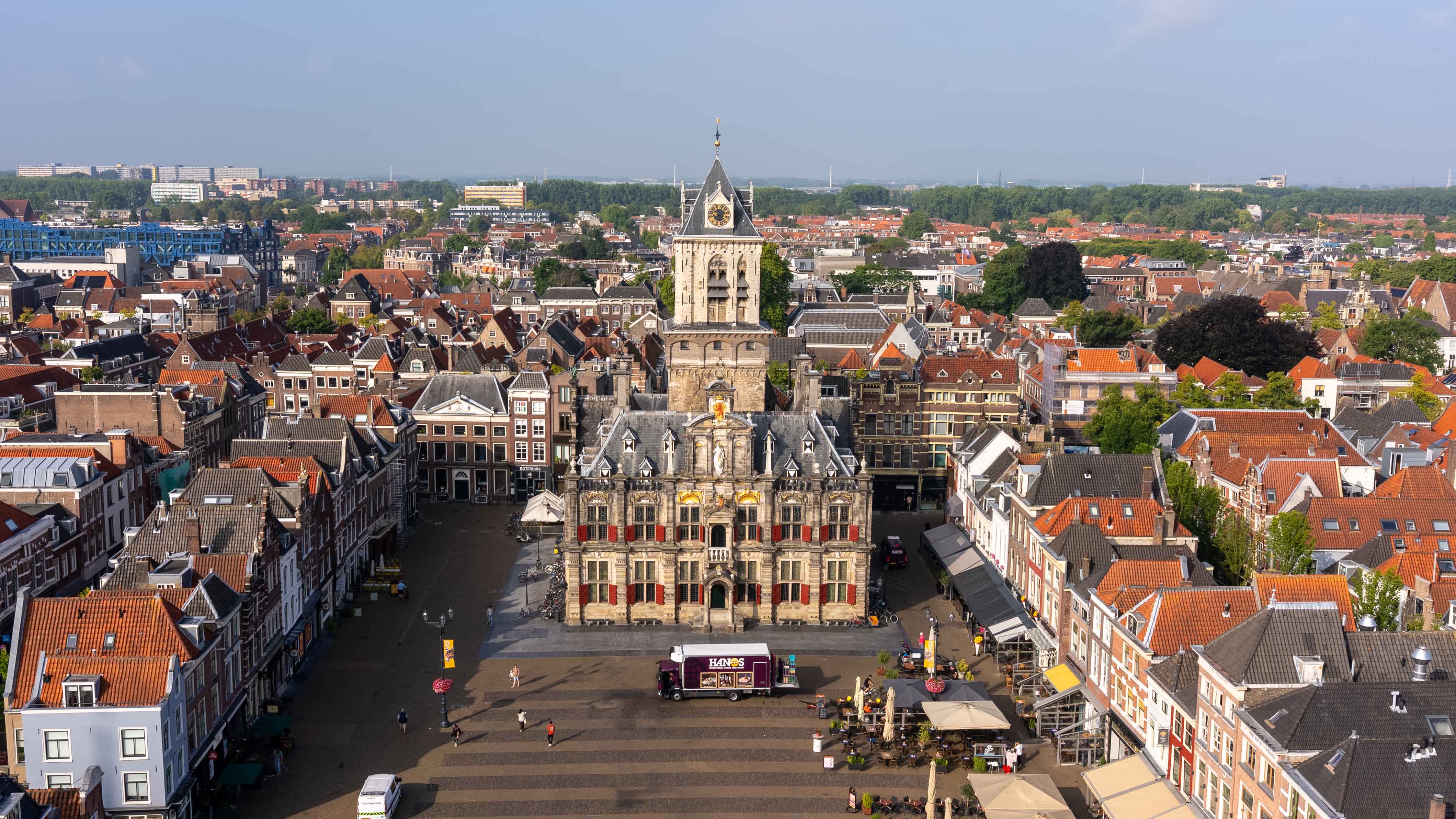
The current building, dating back to the early 1600s, is full of symbolic details and once served as the administrative heart of Delft. The medieval bell tower, still intact, was once used to announce curfews and warn of fires.
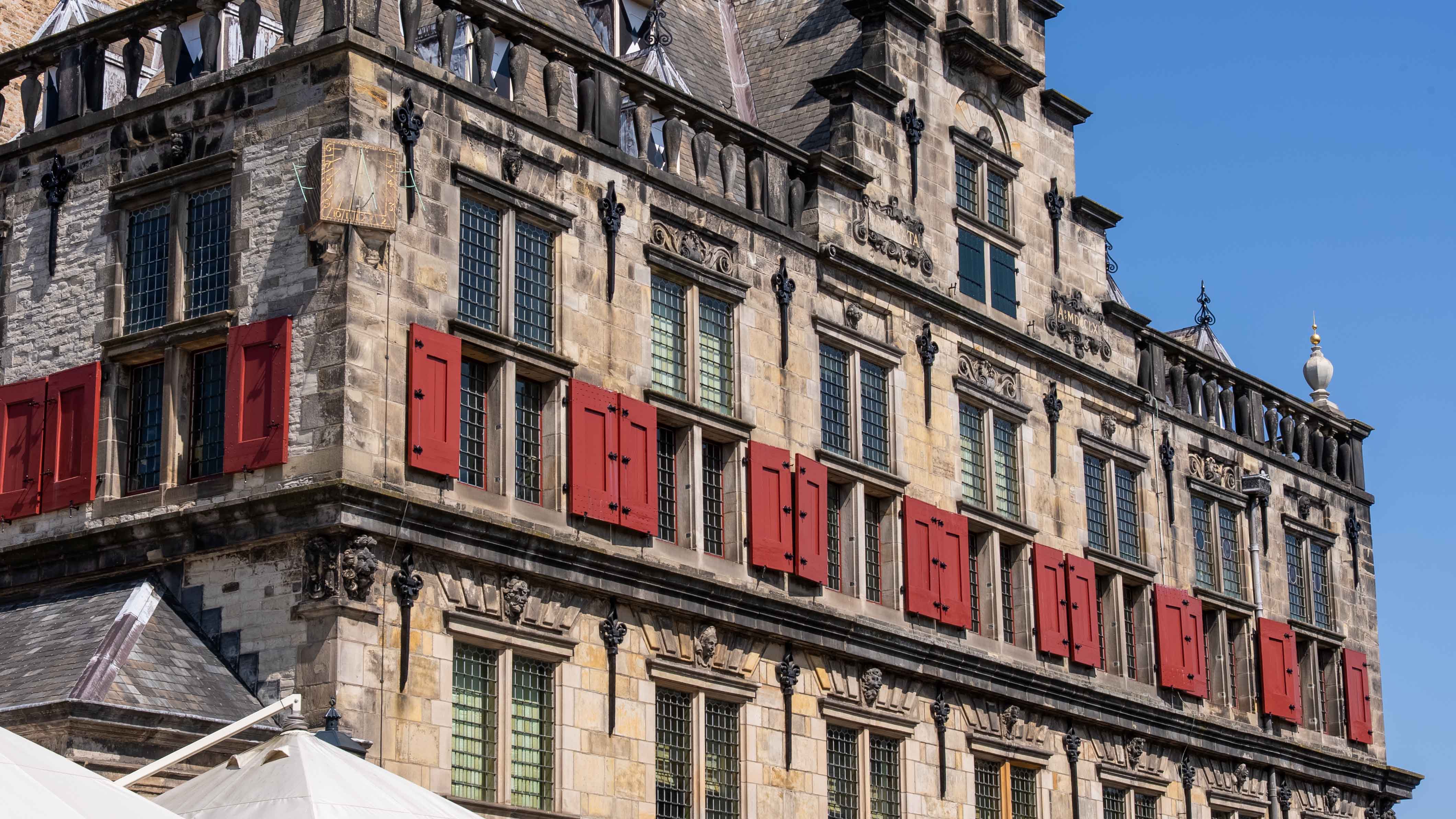
Today, the Marktplein is the city’s social hub. On Thursdays, the square hosts one of the largest open-air markets in the Netherlands, selling everything from fresh produce to Dutch cheeses and flowers. Throughout the year, seasonal festivals and events transform the square into a lively stage of music, lights, and celebration.
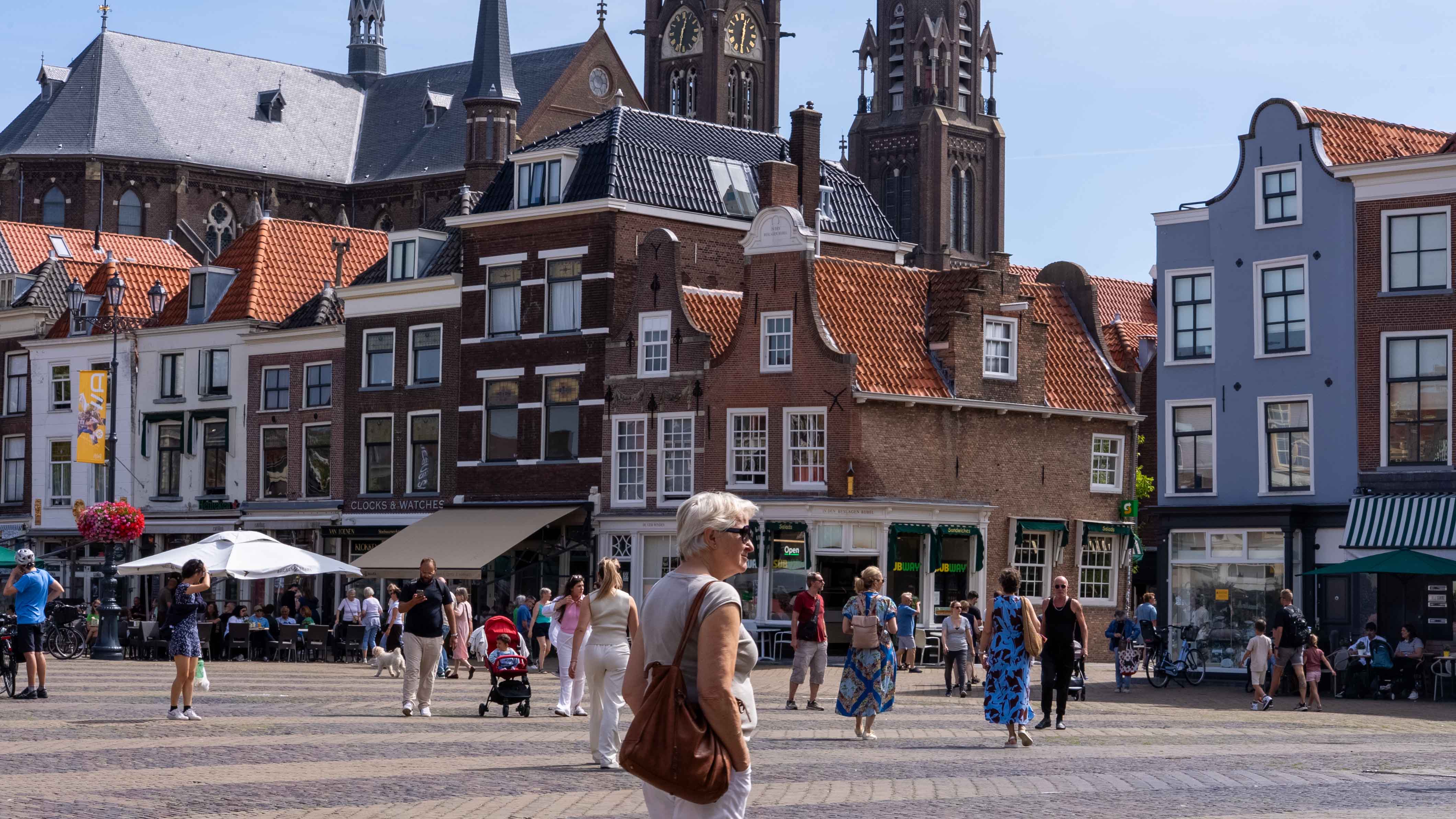
Oude Kerk (Old Church)
The Old Church, or Oude Kerk, is Delft’s oldest building, founded in 1246. Its slightly leaning brick tower gives it the nickname “The Leaning Tower of Delft.”
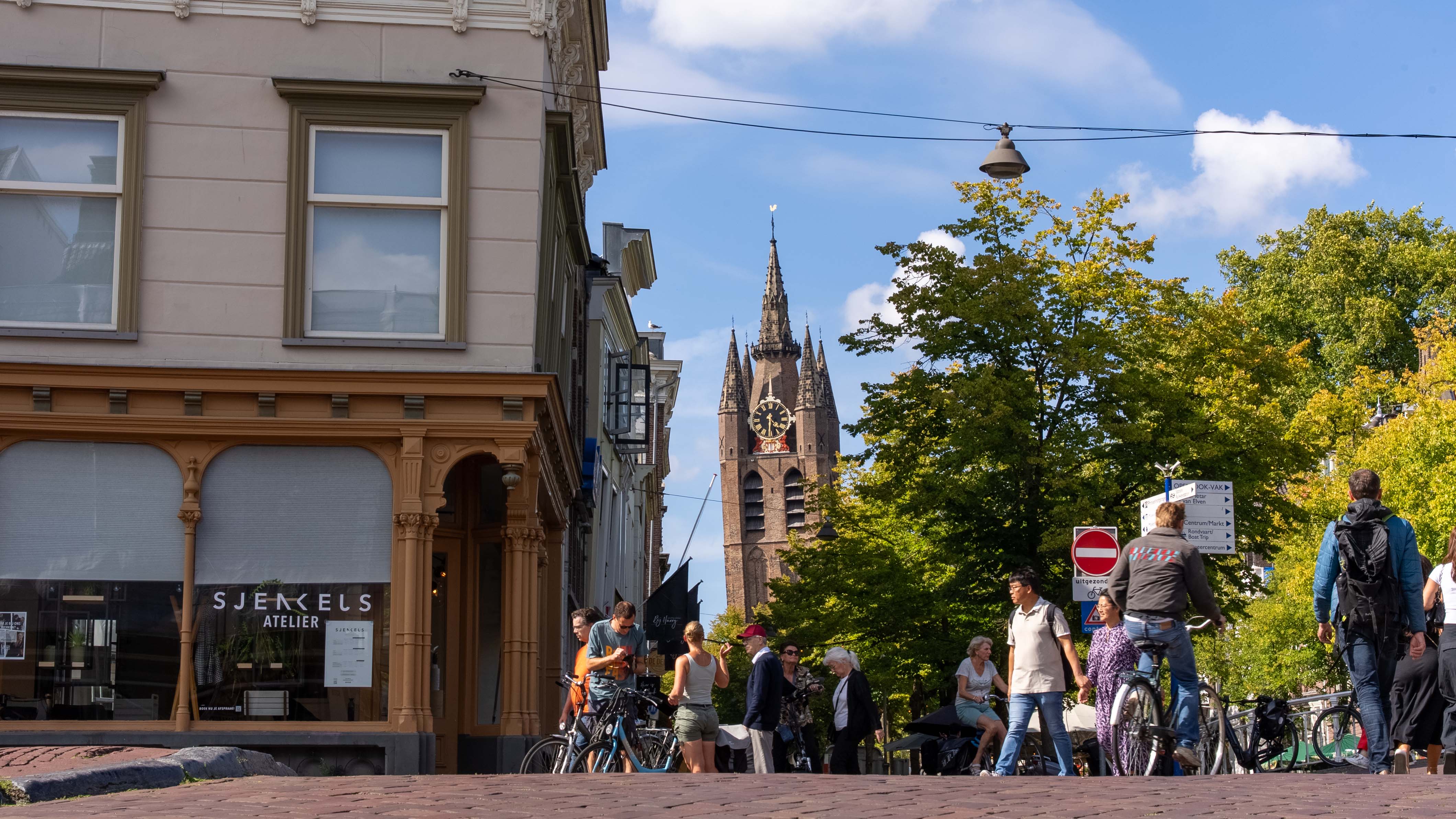
But inside, the church is less about quirky architecture and more about the people it commemorates.
This is where Johannes Vermeer, Delft’s most famous son, was buried in 1675. Known worldwide for masterpieces like Girl with a Pearl Earring and The Milkmaid, Vermeer painted daily life in Delft with unmatched intimacy and light. Alongside Vermeer, the Old Church holds the graves of Dutch naval heroes, scientists, and politicians, making it a true hall of fame of Dutch history.
The Gothic interior is lit by spectacular stained-glass windows, many of which were destroyed during World War II and later replaced. The mix of medieval and modern glass creates a powerful effect, blending faith, resilience, and Dutch identity.
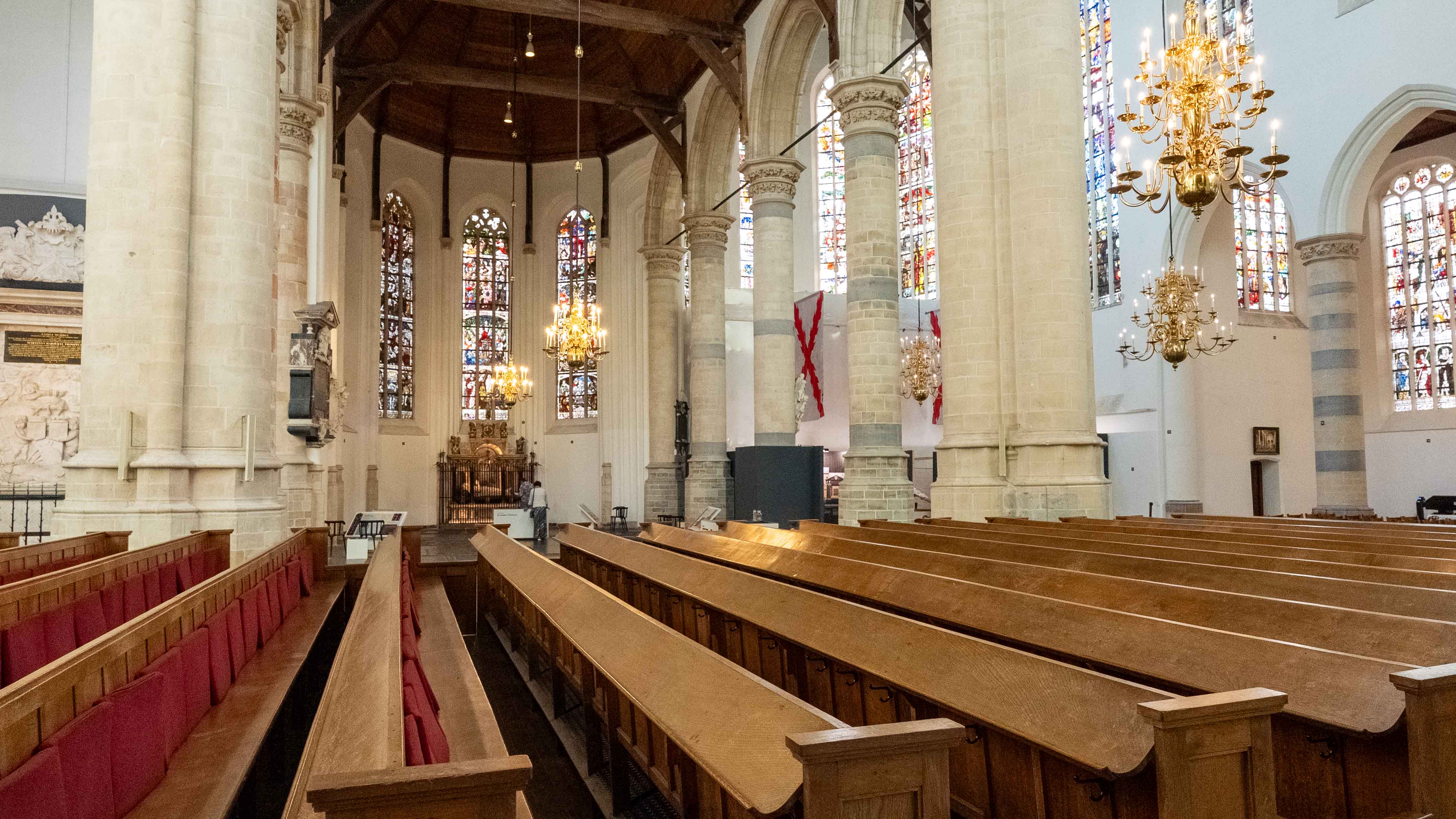
Museum Prinsenhof Delft
If there’s one building that changed Dutch history forever, it’s the Prinsenhof. Originally a monastery, it became the residence of William of Orange — until his assassination here in 1584. You can still see the bullet holes in the wall, preserved behind glass.
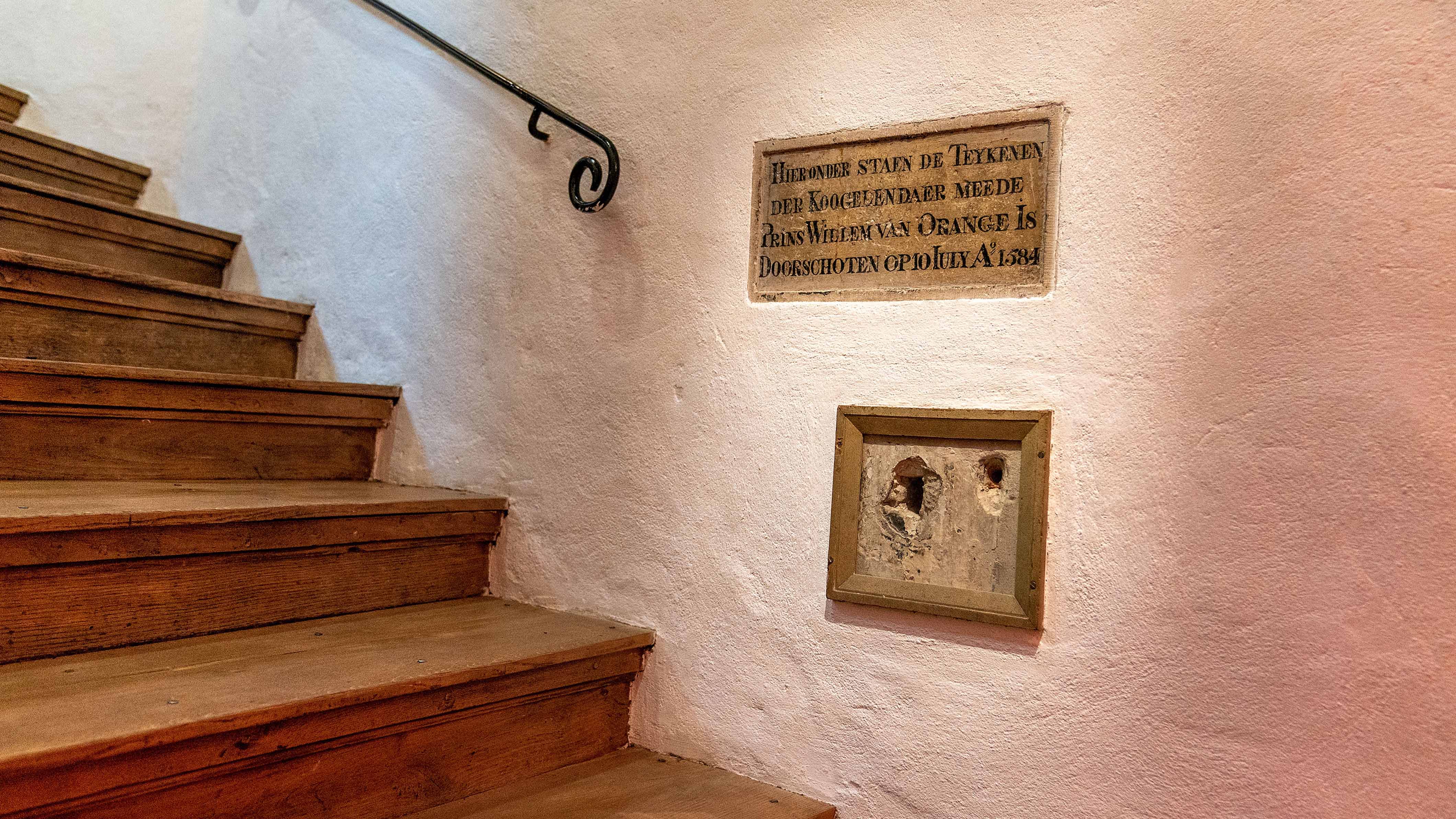
The museum (currently under renovation) tells the story of the Dutch revolt against Spain and the birth of the Dutch Republic. Even while closed, the peaceful courtyard and historic exterior are worth a stop for a quiet moment of reflection.
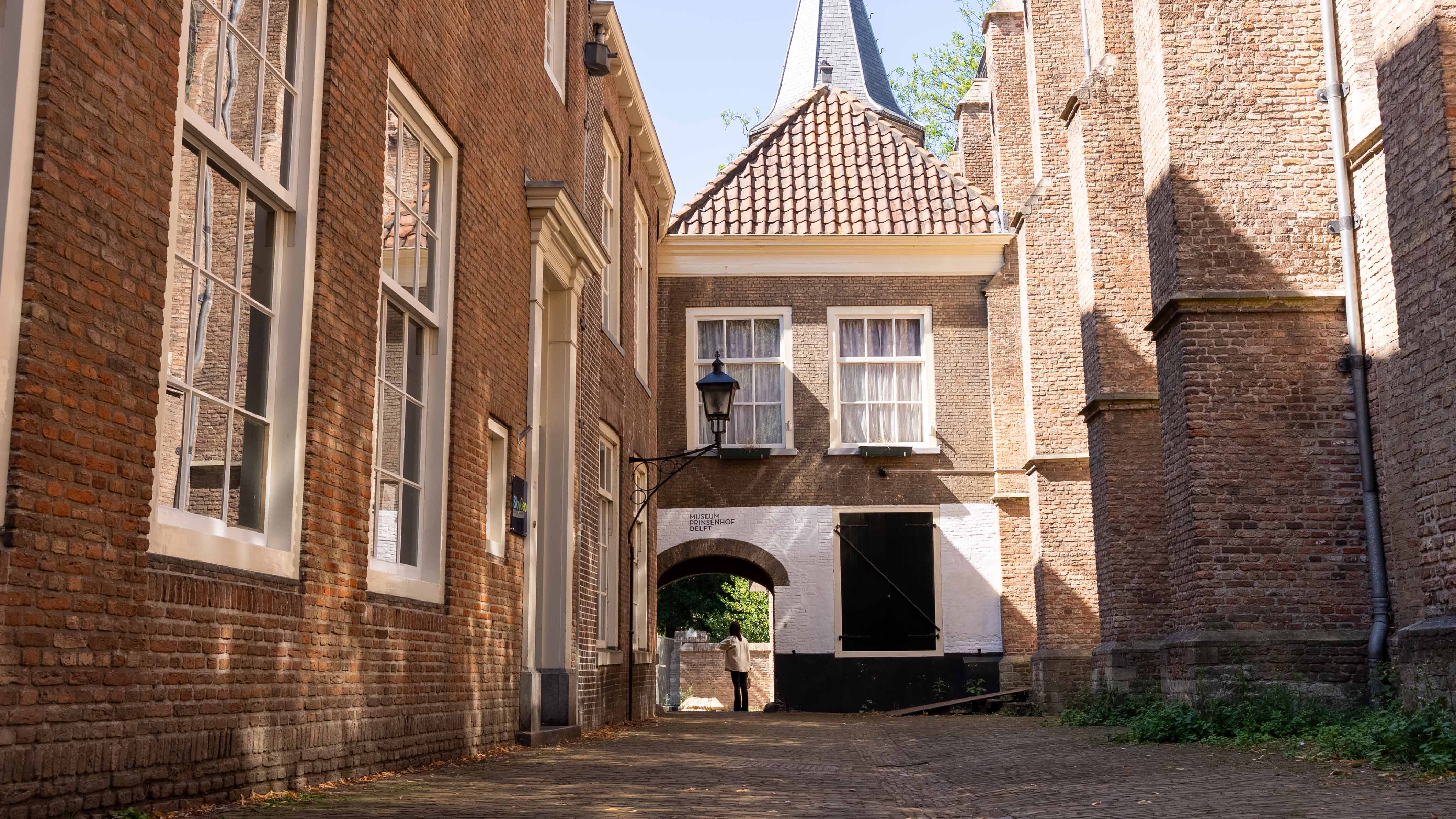
Vermeer Centrum Delft
For art lovers, the Vermeer Center is a must. While none of Vermeer’s original paintings remain in Delft (most are scattered across world museums), the center offers high-quality reproductions and multimedia exhibits that bring his world to life.
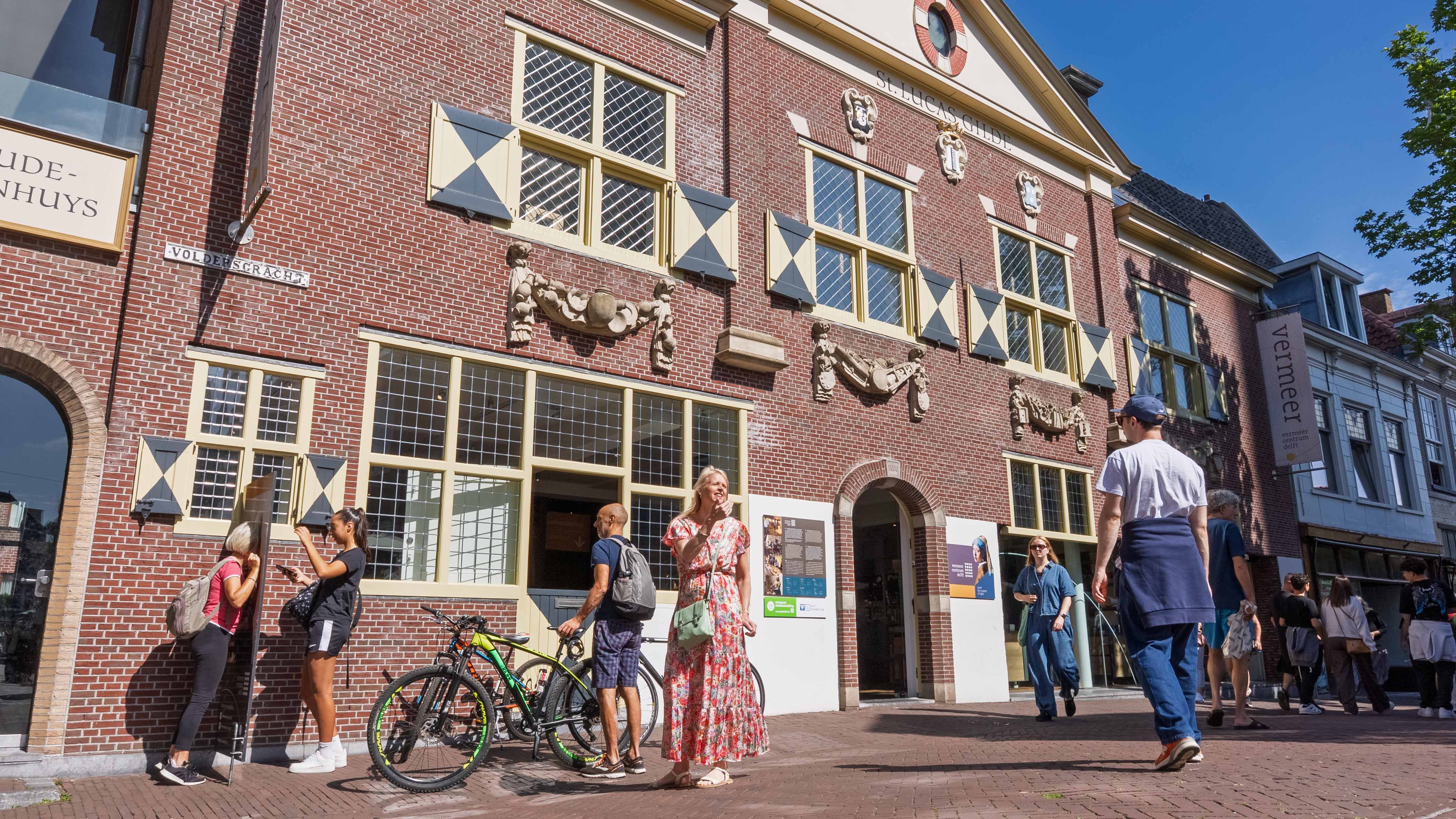
Here, you’ll discover how Vermeer mastered the use of light, how he painted Delft’s interiors and cityscapes, and what life was like in the 17th century. The attic-level “Vermeer window” is a highlight — it recreates the soft northern light that became the hallmark of his paintings.

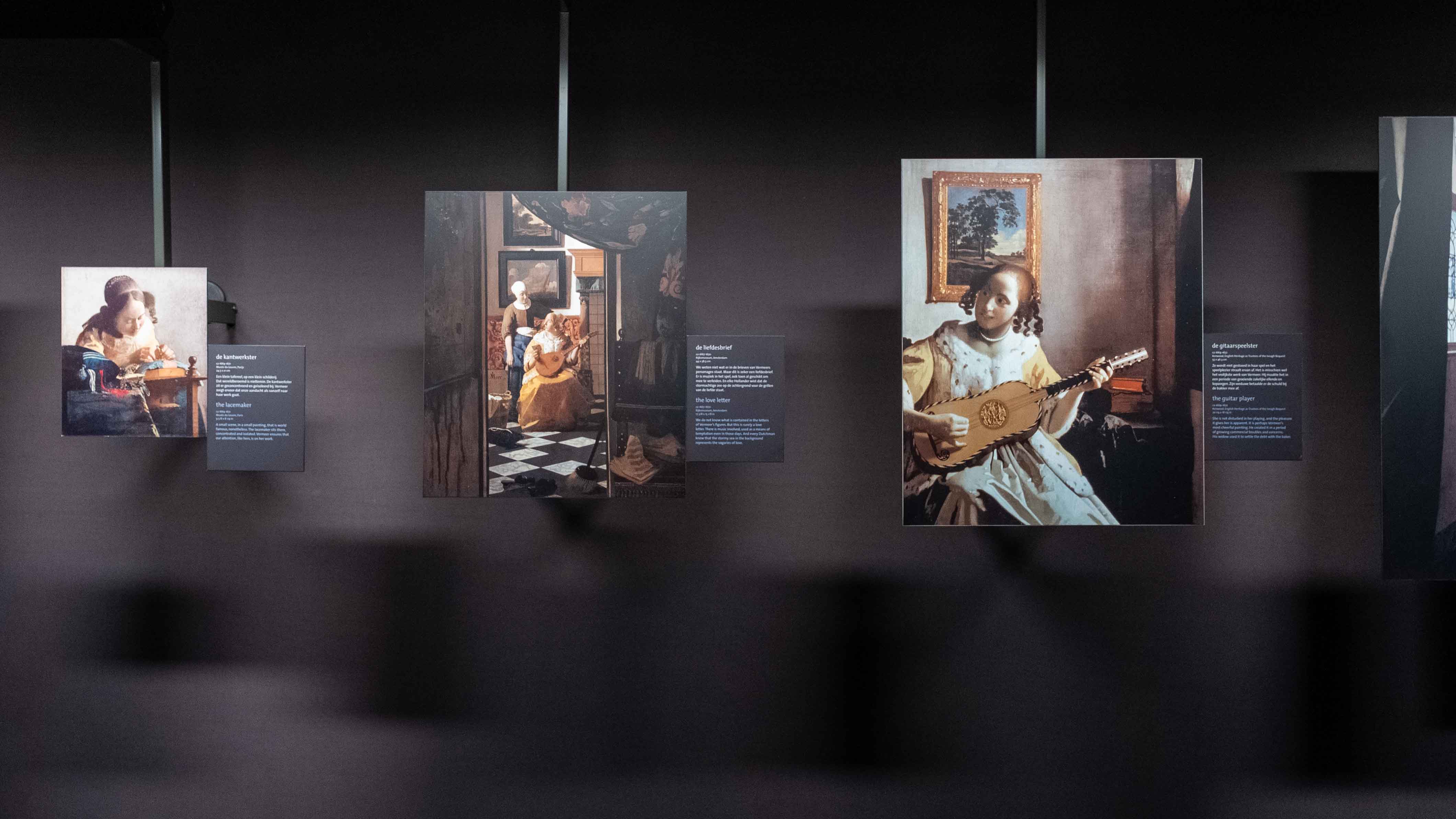
Canal Tours
Delft is a city of canals, and the best way to experience them is from the water. A one-hour boat tour takes you past arched stone bridges, 17th-century houses, hidden courtyards, and landmarks like the Old and New Church. It’s a chance to see Delft from a painter’s perspective, with reflections dancing on the water.

Tours run several times daily, and private options are also available. You can book your tickets with this link.
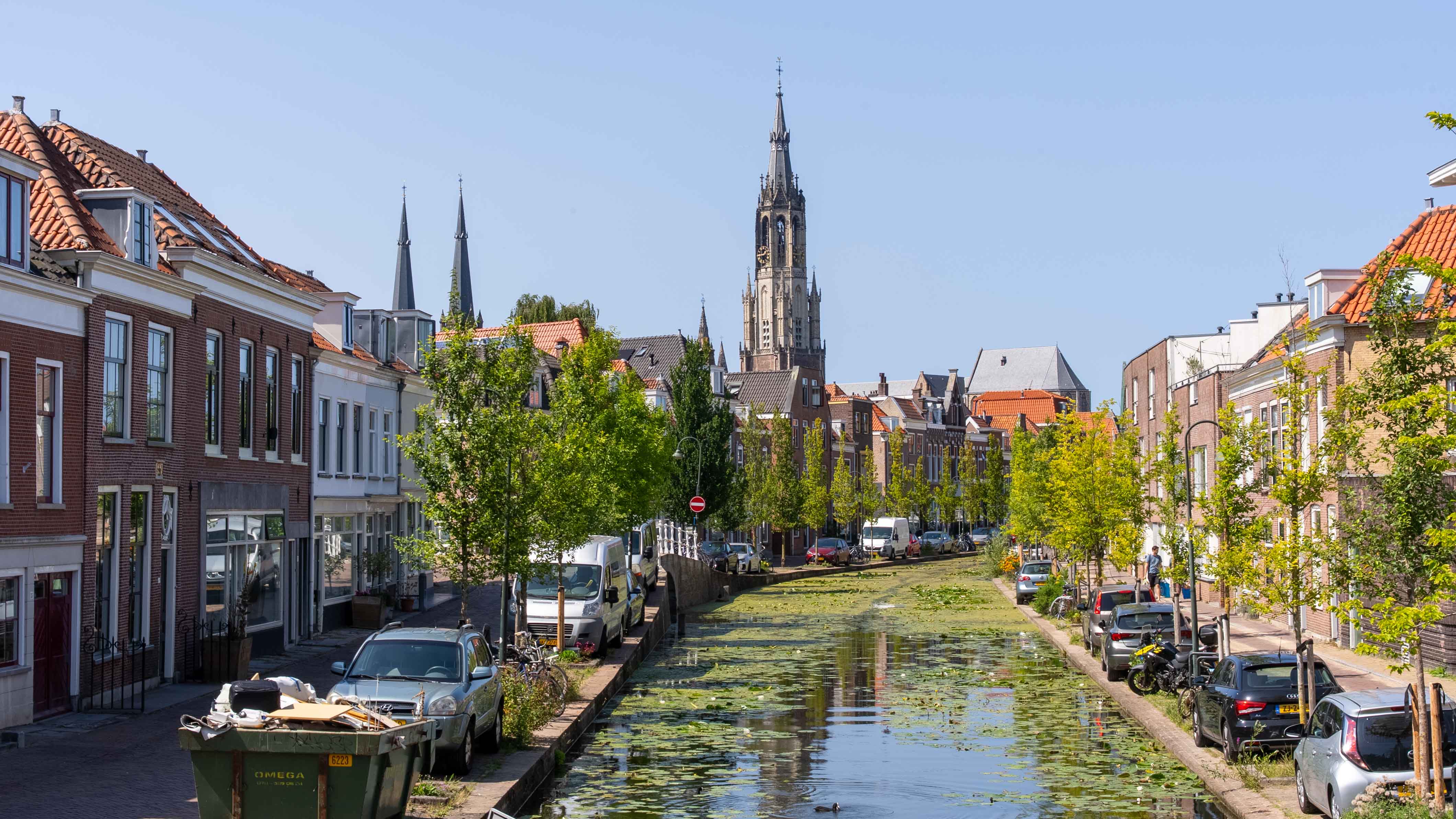
Oostpoort (Eastern Gate)
The Oostpoort (Eastern Gate) is Delft’s only surviving medieval city gate, built around 1400. With its twin towers and elegant spires reflected in the canal, it looks like something out of a fairytale.
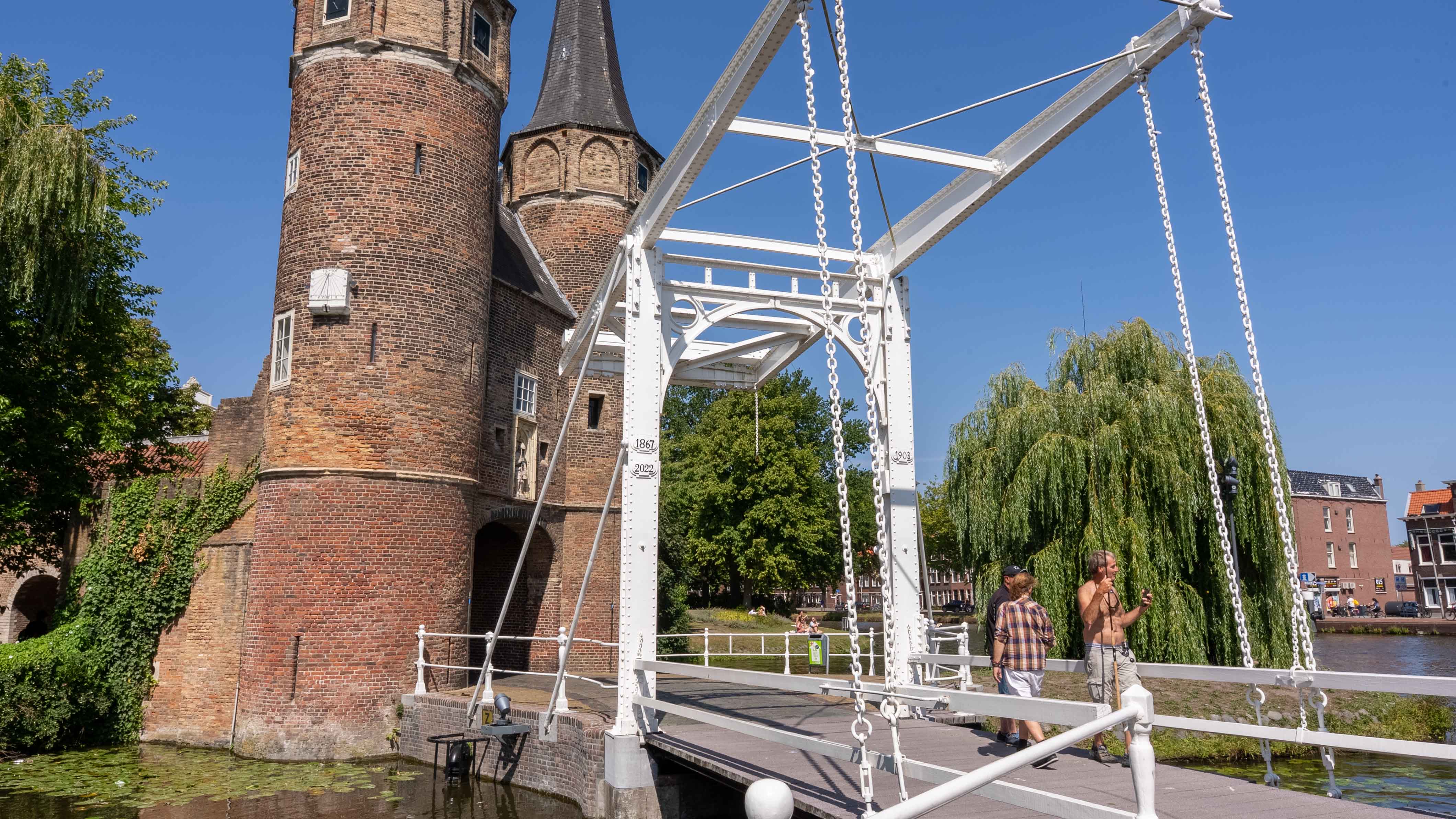
As Delft modernized, most of its eight city gates were demolished, but the Oostpoort was spared — likely because of its striking beauty. Today it serves as a private residence and artist studio. Surrounding it are peaceful walking paths and a picturesque canal. For the best photo, head to the small footbridge just west of the gate, especially in the golden evening light.
Royal Delft (Koninklijke Porceleyne Fles)
Delft is world-famous for its blue-and-white ceramics, known as Delftware. Founded in 1653, Royal Delft is the last surviving factory from the city’s golden age of pottery. Inspired by imported Chinese porcelain, Delftware became a luxury item across Europe in the 17th century.
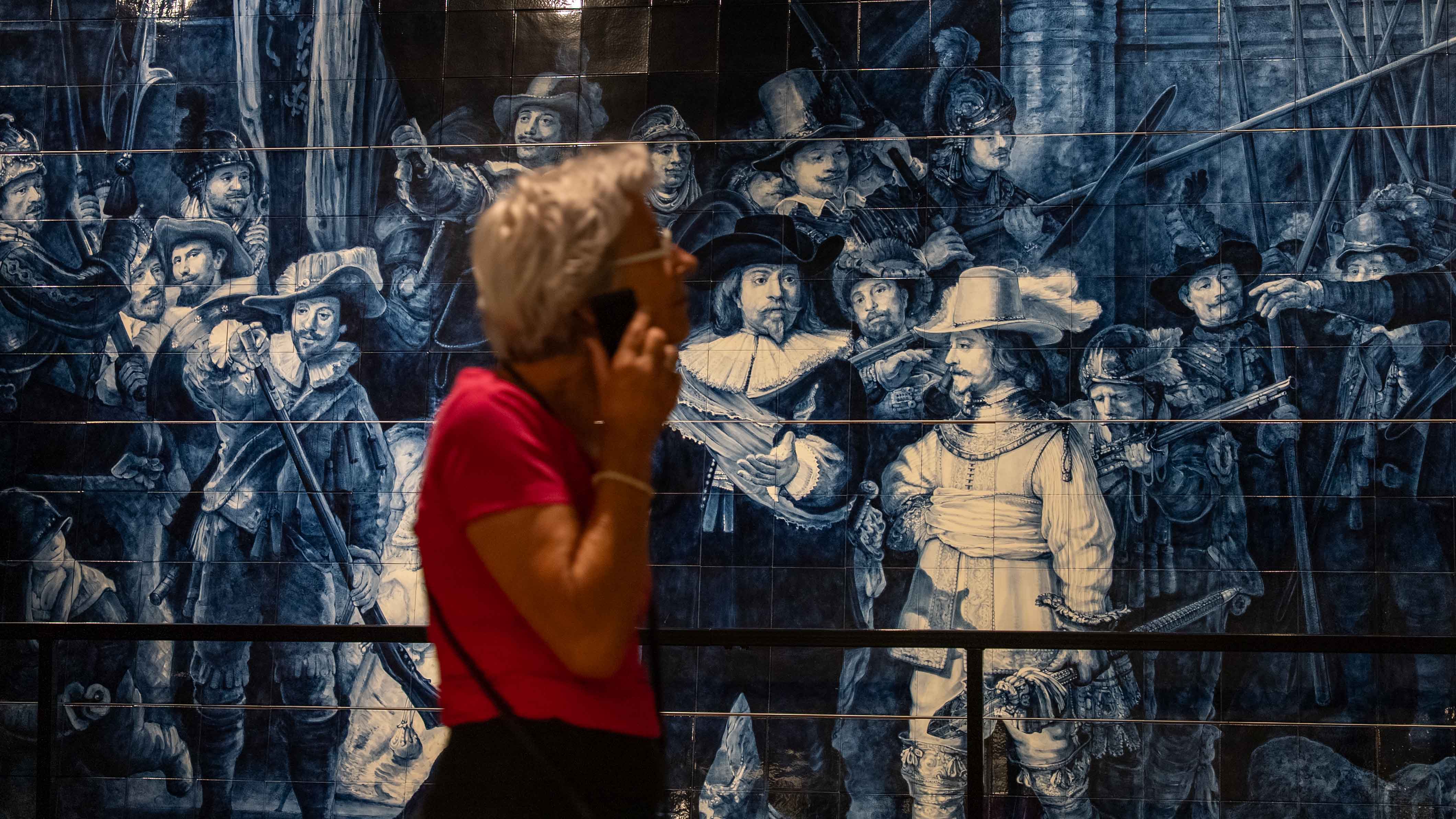
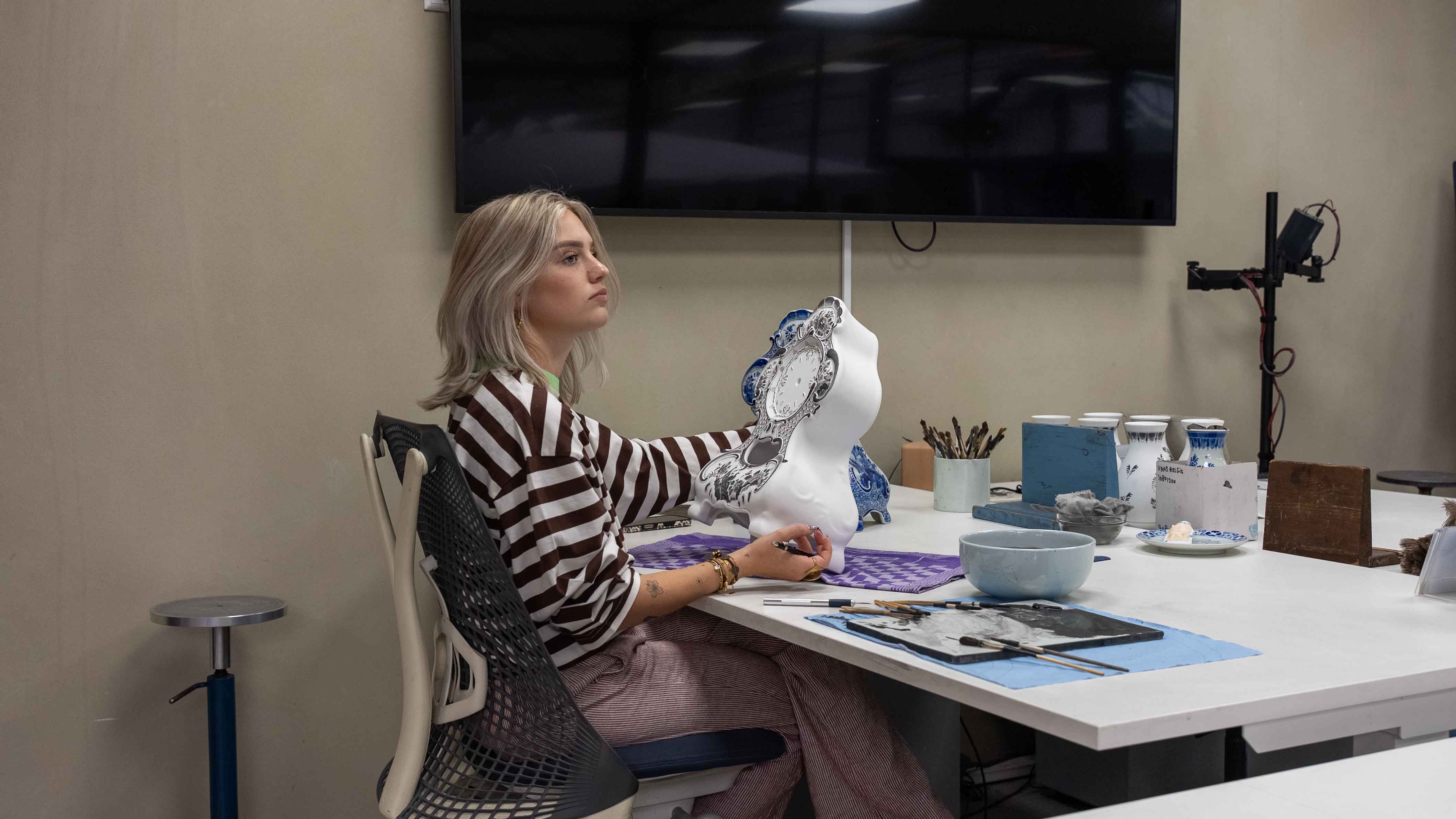
You can tour the working factory, watch master painters at work, and explore galleries that trace the history of Delftware from classic tulip vases to contemporary art collaborations. The onsite museum displays royal commissions and experimental designs, while the tranquil garden and café offer a place to relax. For a hands-on experience, you can even paint your own Delft Blue tile.
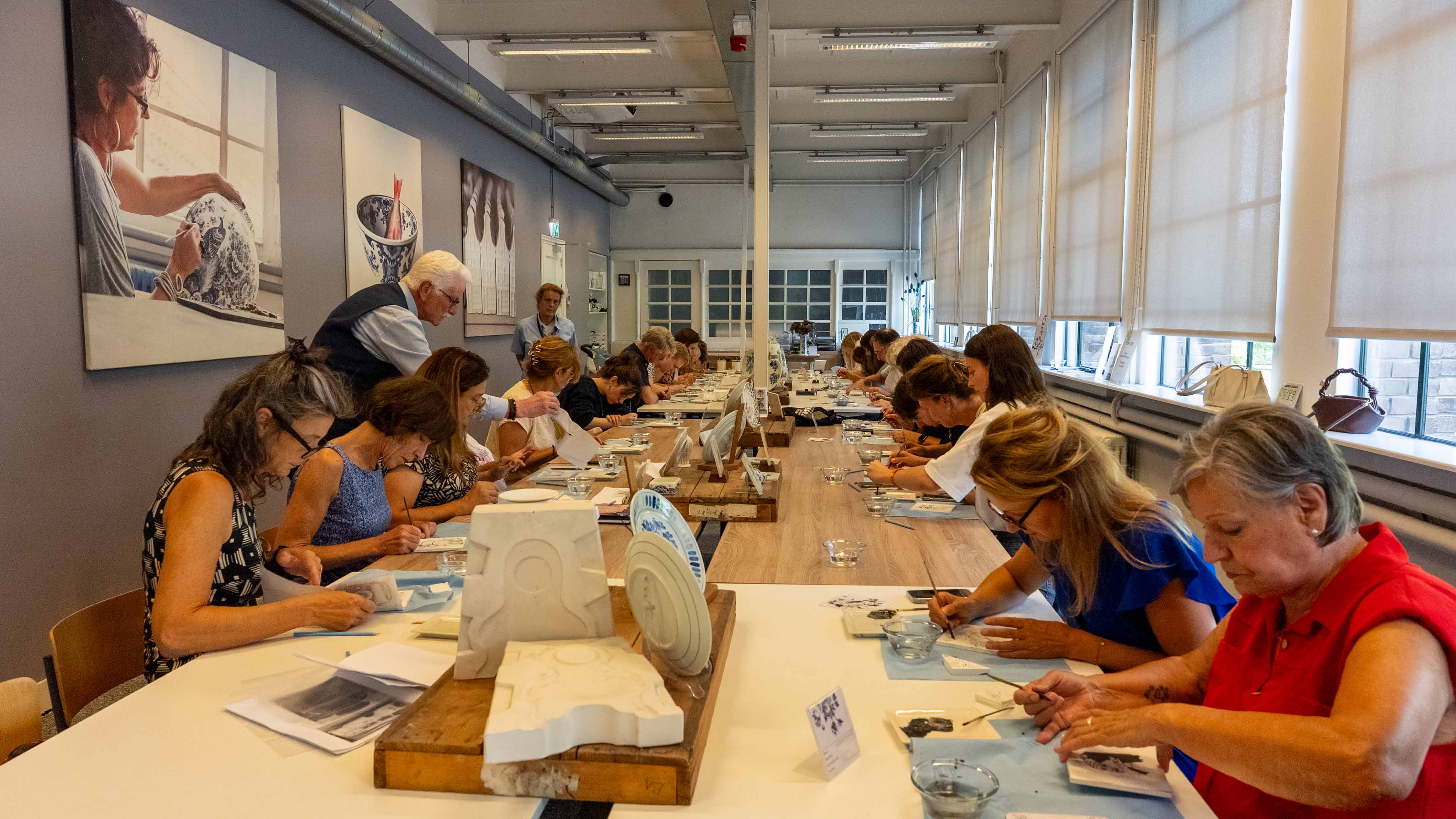
Beestenmarkt
Once a cattle market, the Beestenmarkt is now a leafy square filled with cafés, restaurants, and bars. Locals and students gather here year-round, but the square truly comes alive in spring and summer when outdoor terraces are buzzing with life.
Expect everything from traditional Dutch pubs with dark wooden interiors to modern brasseries with international menus.
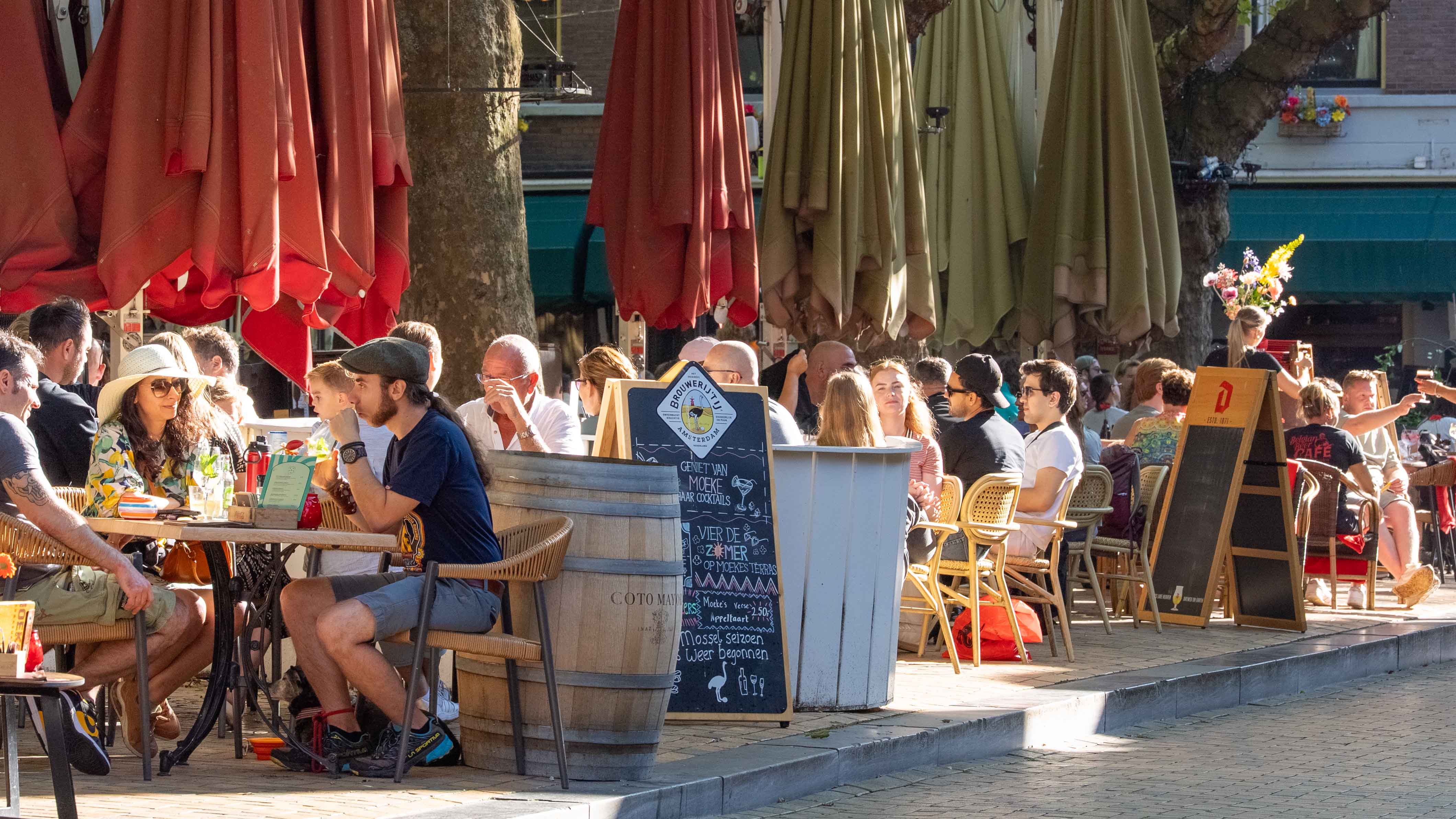
Het Kruithuis (Gunpowder House)
Built in 1660, the Kruithuis stored gunpowder for Delft’s defenses. Its design — thick walls, small windows, and a remote location by the Schie canal — made it safer in case of an explosion. Today, the building is not regularly open to the public, but the surrounding green space is ideal for a quiet walk or picnic.
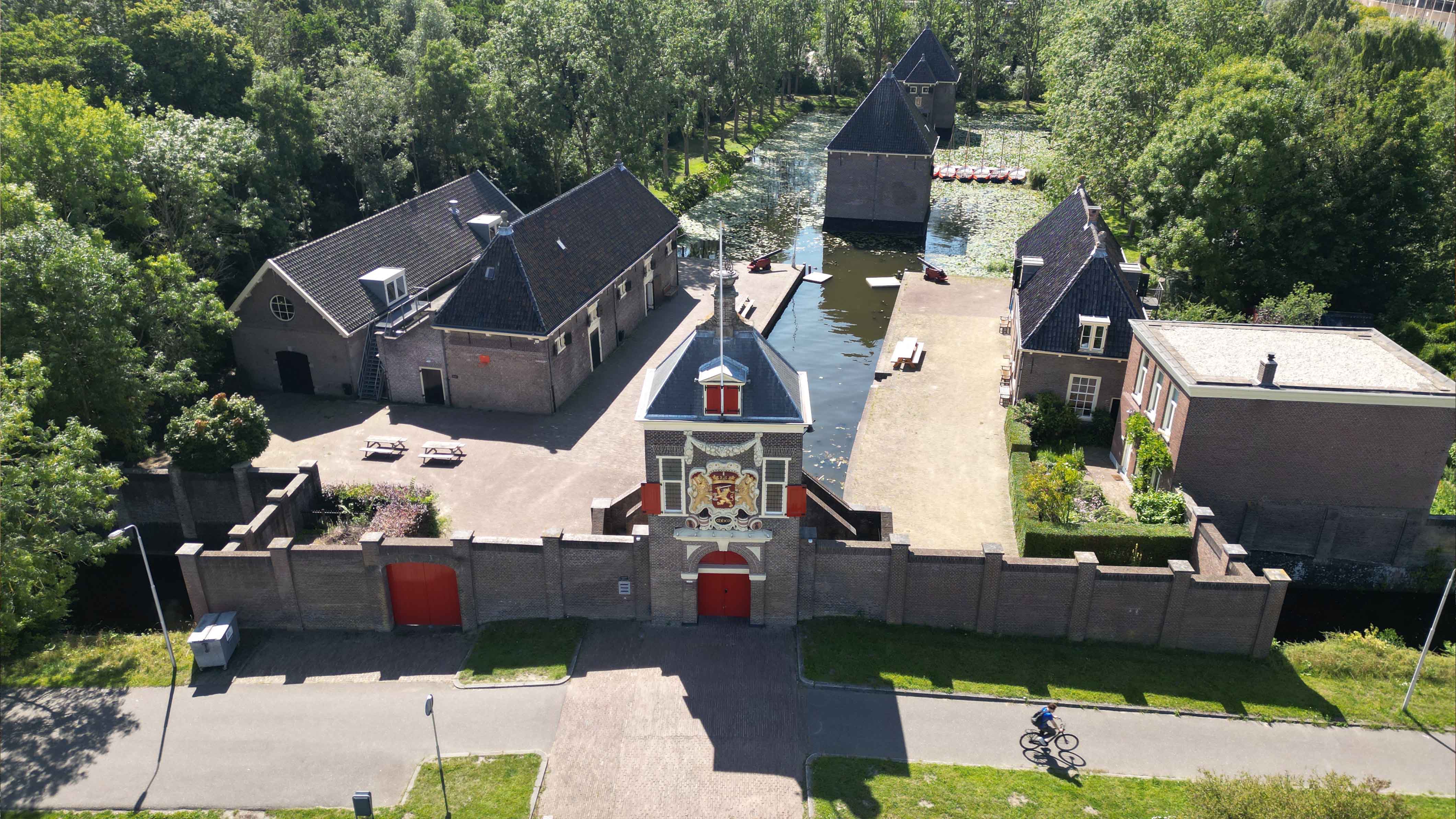
TU Delft Hortus Botanicus
For a change of pace, visit the Botanical Garden at Delft University of Technology. Established in 1917, it was originally intended for pharmaceutical and technical research. Today it’s home to more than 7,000 plant species from around the world.
The garden includes tropical greenhouses, desert succulents, and experimental plots — a mix of science and beauty. It’s a wonderful hidden gem if you need a break from sightseeing in the city center.
Museum Paul Tétar van Elven
The former canal house of 19th-century painter and professor Paul Tétar van Elven offers a glimpse into the elegant lifestyle of Delft’s bourgeoisie. Preserved almost exactly as he left it, the house contains copies of old masters, porcelain, antique furniture, and the artist’s personal belongings. Walking through feels like entering a time capsule of 19th-century cultural life.
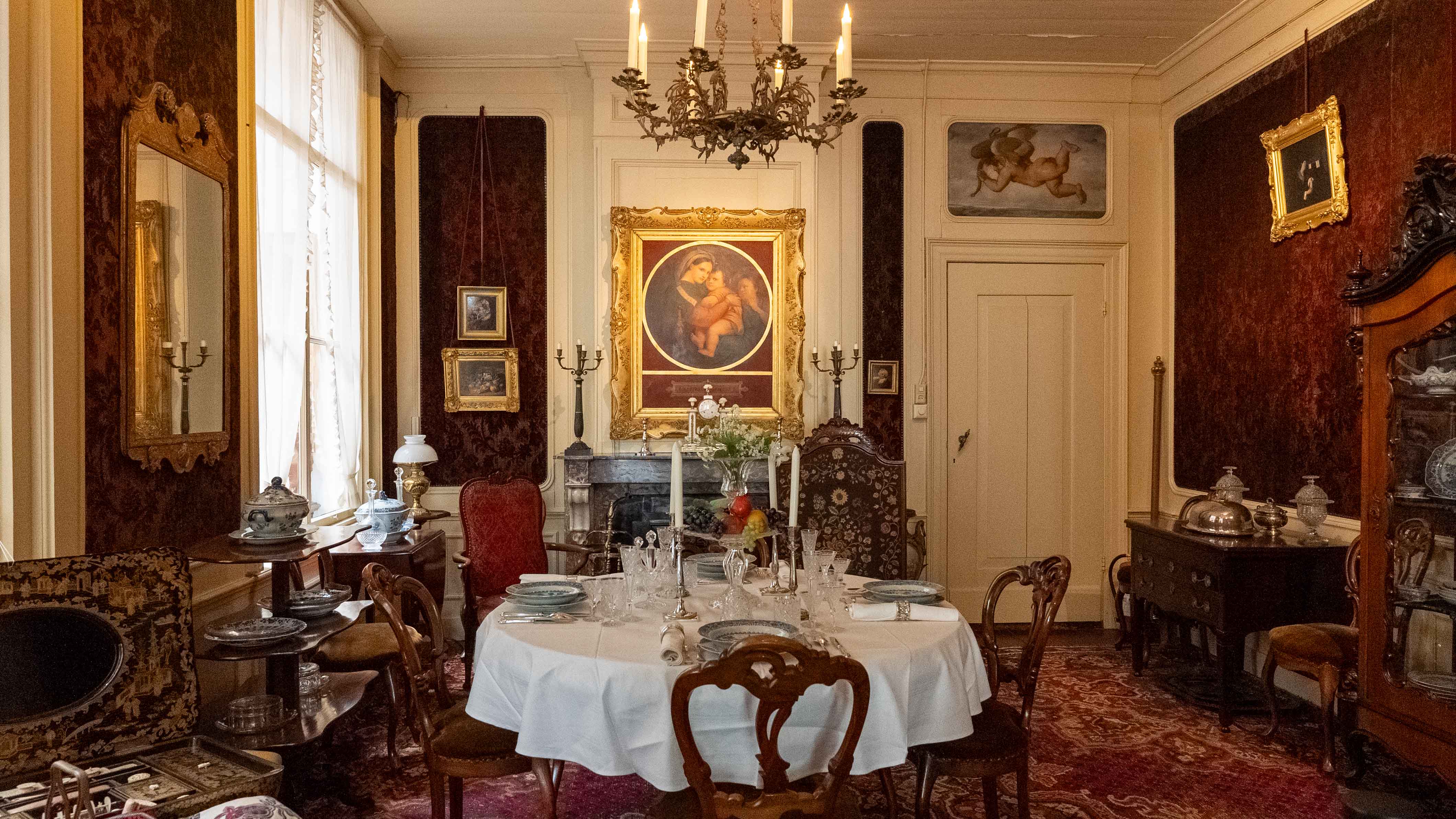
RADIUS – Center for Contemporary Art & Ecology
Delft isn’t just about history — it’s also a city of innovation. RADIUS, a contemporary art center, is housed in a former water reservoir beneath Kalverbos park. Its exhibitions focus on climate, ecology, and the intersection of science and art. With its bunker-like atmosphere and rotating digital and environmental art installations, it’s a fascinating counterpoint to Delft’s centuries-old churches and canals.

Best Time to Visit Delft
The best months to visit Delft are May to September. During this time, the weather is mild, with temperatures between 15°C and 30°C. Spring brings blooming tulips and quieter streets, while summer offers lively markets, canal-side terraces, and warm evenings on the squares. And even with the slightly lower temperatures, the city is still a wonderful place to visit in autumn and winter.
